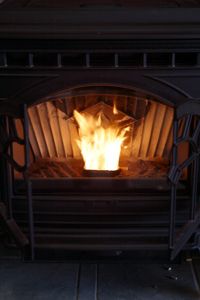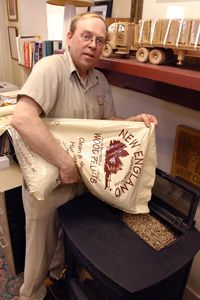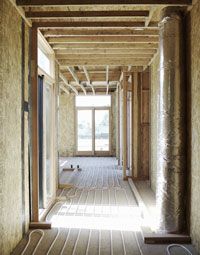Everyone loves a fire. But let's face it -- the chopping and storing and constant stoking of firewood can be a drag. Not to mention the worry about whether or not you put it out all the way before you go to sleep. Plus, wood smoke contains hundreds of chemical compounds that can affect your health, and in many areas, wood smoke is a major contributor to pollution. So what's a fire lover to do? Rest assured there's an alternative that's not only convenient, but also cost-effective and environmentally friendly. It's called a wood pellet stove.
Leading up to the 20th century, 90 percent of Americans used wood to heat their homes. Once fossil fuels came on the scene, using wood for fuel fell out of fashion, and by 1970, it's estimated that about 1 percent of the American population was burning wood to heat their homes. However, the energy crisis of the 1970s prompted people to start using wood again as a renewable energy alternative, and since then, fireplace use has been on the rise.
Advertisement
Wood pellet stoves resemble wood burning stoves and fireplaces, but the similarities end there. These stoves are electronically sophisticated appliances that offer an environmentally friendly and low-cost heating option for your home. In a time when environmental awareness is at the forefront and families are keeping a close eye on their finances, wood pellet stoves have become all the rage.
All wood pellet stoves require the same kind of fuel - the wood pellet. These pellets are the byproduct of sawmills and are made from recycled sawdust and wood shavings. The wood pellets look a lot like rabbit food and are considered eco-friendly because they're cheap and easy to manufacture. Plus, they have a very low pollution rate. You can also buy pellets made of grass and corn, but they're not intended for use in stoves specifically designated for wood pellets.
In our next section, we'll examine the inner workings of a wood pellet stove.



